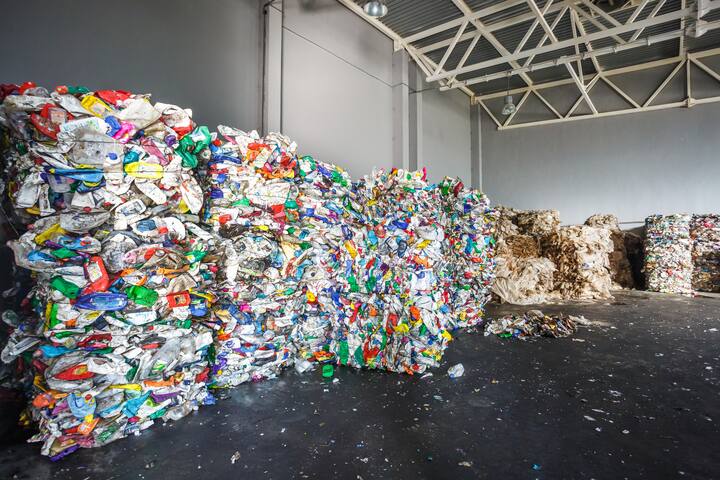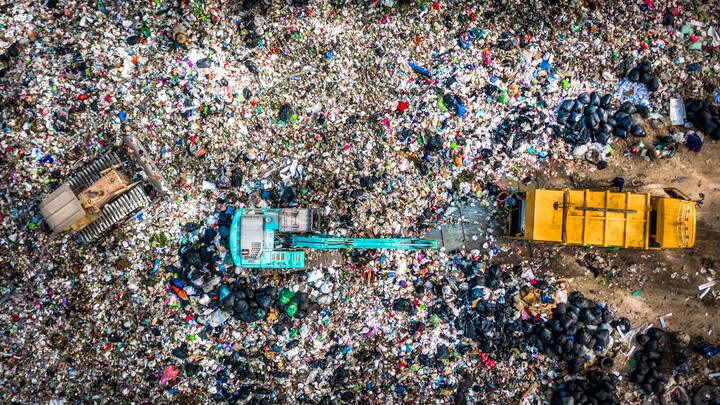
EU publiceert definitieve verordening ‘Verordening verpakkingen en verpakkingsafval’ PPWR
EU publishes final regulation on packaging and packaging waste (PPWR)
This is a premium article. Premium articles are part of the Normec Foodcare Knowledge Centre subscription. All knowledge and experience from every area of expertise is brought together in the Knowledge Base. Here you will find all relevant information about various product groups and legislation. Curious? Read what the Normec Foodcare Knowledge Centre can offer you.
On 22 January 2025, the European Union published the final text of Regulation (EU) 2025/40 on packaging and packaging waste (PPWR). This regulation, which entered into force on 11 February 2025, is a crucial part of the European strategy for a circular economy. The rules aim to reduce the environmental impact of packaging, promote reuse and recycling, and reduce the amount of waste.
This regulation amends the Regulation (EU) 2019/2010 on market surveillance and compliance and the SUP Directive (EU) 2019/904 and repeals the Packaging Directive 94/62/EC.
With the PPWR, the EU has set ambitious reduction targets. By 2030, the amount of packaging waste per capita must be reduced by 5%, followed by 10% in 2035 and 15% in 2040. In addition, the regulation encourages the use of recycled materials. Minimum requirements for the percentage of recycled material are set for plastic packaging, depending on the type and application.
An important measure within the regulation is the harmonisation of labelling rules. Uniform labels for waste separation will be introduced so that consumers can easily see how packaging materials should be separated and processed correctly. In addition, producers will face stricter design requirements: packaging must be reusable or recyclable and must not contain unnecessary materials or harmful substances.
Responsibility of producers
The PPWR places additional responsibility on producers. They are required to bear the costs of managing the packaging waste they place on the market. This includes not only collection and processing, but also awareness campaigns to encourage consumers to separate waste correctly.
Contribution to the Green Deal
The PPWR plays a key role in achieving the objectives of the European Green Deal. In addition to reducing waste and promoting a circular economy, the measures contribute to reducing CO₂ emissions and reducing dependence on primary raw materials. With the publication of the final text, Member States, businesses and other stakeholders can prepare for the implementation of the new rules.

Objectives
The PPWR Regulation sets out objectives. Here is a brief summary, but there are several exceptions. It is advisable to read the regulation in full. Please note: the European Member States will still have to implement their own specific measures. Member States cannot change the main objectives, such as the percentages set.
Restriction of hazardous substances (Article 5)
Restricting or prohibiting the use of certain hazardous substances in packaging to ensure the safety of recycling processes and the health of consumers. Materials may not contain more than 100 mg/kg of the substances lead, cadmium, mercury and hexavalent chromium. The PPWR prohibits packaging that comes into contact with food from containing PFAS or exceeding the established thresholds. Companies must demonstrate with technical documentation that the packaging complies with the rules for heavy metals and PFAS. The requirements for this documentation are set out in Annex VII of the Regulation.
Recyclability (Article 6)
By 2030, all packaging on the EU market must be economically viable to recycle. Packaging is classified based on a recycling score from the Design for Recycling (DfR) guidelines.
Your packaging will be assigned a score from A to E based on these guidelines. By 2030, packaging will need to have a recycling score of A-C to comply with the new standards. By 2038, this will be A-B. Annex 6 describes how compliance with Article 6 must be demonstrated by means of technical documentation.
The requirements of Article 6 do not apply to:
Contact-sensitive packaging for infant formula, follow-on formula, processed cereal-based foods, baby foods and foods for medical purposes.
(Contact-sensitive) packaging for medicinal products and packaging that ensures the quality of medicinal products.
Sales packaging made of lightweight wood, cork, textiles, rubber, ceramics, porcelain or wax (paragraph 8 remains applicable).
Packaging for the transport of dangerous goods.
Recycled content (Article 7)
Setting minimum percentages of recycled material in new plastic packaging, with stepwise increases by 2030 and 2040. From 2030, plastic packaging must contain the following average percentages of post-consumer recycled material (PCR):Contact-sensitive packaging
PET as the main component: 30%. Everything other than PET: 10%
By 1 January 2040, this will increase to: PET as the main component: 50%. Everything other than PET: 25%
Non-contact sensitive
All plastics: 35%
By 2040, the minimum share of all plastics will increase to 65%
Single-use plastic bottles
SUP: 30%. By 2040, this minimum share of SUP will increase to 65%
By 31 December 2026 at the latest, the calculation of the percentages of recycled content in packaging and how verification is to take place will be published.
Bio-based raw materials in plastic packaging (Article 8)
Within three years of the publication of the regulation, technological progress and the environmental performance of bio-based plastics will be assessed. A decision will then be made on whether to set sustainability criteria and targets for these packaging materials.
Compostable packaging (Article 9)
Within 36 months of the entry into force of the Regulation, packaging made from biodegradable plastic polymers and other biodegradable materials must be suitable for material recycling in accordance with Article 6, without affecting the recyclability of other waste streams. In addition, packaging and sticker labels on fruit and vegetables must comply with the composting standard (currently EN 13428) within the same timeframe. Compliance with Article 9 must be demonstrated by technical documentation in accordance with Annex VII.
Waste prevention through minimising packaging (Article 10)
By 1 January 2030, all packaging must be of the minimum possible volume and weight without compromising functionality. There are a few exceptions to this article, and performance criteria also apply to assess the optimum minimum weight and volume.
Reusability (Article 11)
Increasing the share of reusable packaging on the market, with specific targets for different sectors and product categories. A number of requirements will already apply from 11 February 2025. Compliance with Article 9 must be demonstrated with technical documentation in accordance with Annex VII.
Labelling (Articles 12, 13 and 14)
Recycling logos: From August 2025, uniform European symbols will have to appear on packaging to facilitate recycling for consumers and improve the quality of separate collection.
Labelling for reusability or deposit refund: this must be communicated clearly and unambiguously on the label.
QR codes: In addition to the uniform label, the use of QR codes containing information on sorting is also permitted.
What else is important?
Market surveillance and enforcement
: Strengthening market surveillance and enforcement mechanisms to ensure compliance with the regulation and prevent unfair competition.
Unnecessary space
: From 1 January 2030, packaging may contain no more than 50% unnecessary space.
Ban on certain types of packaging
: From 1 January 2030, a ban will apply to a number of types of plastic packaging. This includes packaging used for food and beverages (plastic cups and containers) and individual sachets for sauces and preserves. This will have a particular impact on the hospitality industry.
How do the PPWR Regulation and the SUP Directive relate to each other?
The PPWR applies to all packaging, while the SUP Directive specifically concerns single-use plastic packaging. Both regulations have a similar objective: to minimise packaging waste and promote reuse and recycling where waste cannot be avoided. The SUP Directive came into force in 2021 and has been phased in by Member States since then. Ultimately, both laws will coexist, requiring manufacturers and importers of packaged products to comply with both regulations.